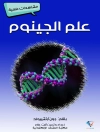I belie ve that the book would provide an overview of the recent developments in the domain of yeast research with some new ideas, which could serve as an inspiration and challenge for researchers in this field. Ne w Delhi Prof. Asis Datta Dec. 24, 2007 F ormer Vice-chancellor, JNU Director, NCPGR (New Delhi) Pr eface Yeasts are eukaryotic unicellular microfungi that are widely distributed in the natural environments. Although yeasts are not as ubiquitous as bacteria in the na- ral environments, they have been isolated from terrestrial, aquatic and atmospheric environments. Yeast communities have been found in association with plants, a- mals and insects. Several species of yeasts have also been isolated from specialized or extreme environments like those with low water potential (e. g. high sugar/salt concentrations), low temperature (e. g. yeasts isolated from Antarctica), and low oxygen availability (e. g. intestinal tracts of animals). Around 1500 species of yeasts belonging to over 100 genera have been described so far. It is estimated that only 1% of the extant yeasts on earth have been described till date. Therefore, global efforts are underway to recover new yeast species from a variety of normal and extreme environments. Yeasts play an important role in food chains, and carbon, nitrogen and sulphur cycles. Yeasts can be genetically manipulated by hybridization, mutation, rare m- ing, cytoduction, spheroplast fusion, single chromosomal transfer and transfor- tion using recombinant technology. Yeasts (e. g.
Table of Content
Diversity and Biology.- Antarctic Yeasts: Biodiversity and Potential Applications.- Basidiomycetous Yeasts: Current Status.- Hansenula polymorpha (Pichia angusta): Biology and Applications.- Debaryomyces hansenii: An Osmotolerant and Halotolerant Yeast.- Candida famata (Debaryomyces hansenii).- Pichia guilliermondii.- Assimilation of Unusual Carbon Compounds.- Ecology and Biodiversity of Yeasts with Potential Value in Biotechnology.- Yeasts Diversity in Fermented Foods and Beverages.- Utilization of Yeasts in Biological Control Programs.- Opportunistic Pathogenic Yeasts.- Interaction Between Yeasts and Zinc.- Glutathione Production in Yeast.- The Fermentative and Aromatic Ability of Kloeckera and Hanseniaspora Yeasts.- Assimilatory Nitrate Reduction in Hansenula polymorpha.- Genetic and Molecular Insights.- Yeast Genetics and Biotechnological Applications.- A Wide-Range Integrative Expression Vector (Co Med) System for Yeasts.- Advances in Gene Expression in Non-Conventional Yeasts.- A Comparative Study of RNA Polymerase II Transcription Machinery in Yeasts.- Non-Genetic Engineering Approaches for Isolating and Generating Novel Yeasts for Industrial Applications.- Yeast Proteome Analysis.- Yeast Genomics for Bread, Beer, Biology, Bucks and Breath.- Biotechnology Applications.- Ethanol Production from Traditional and Emerging Raw Materials.- Potentiality of Yeasts in the Direct Conversion of Starchy Materials to Ethanol and Its Relevance in the New Millennium.- Thermotolerant Yeasts for Bioethanol Production Using Lignocellulosic Substrates.- Applications of the Non-Conventional Yeast Yarrowia lipolytica.- Arxula adeninivorans (Blastobotrys adeninivorans) — A Dimorphic Yeast of Great Biotechnological Potential.- Biotechnological Applications of Dimorphic Yeasts.-Extracellular Polysaccharides Produced by Yeasts and Yeast-Like Fungi.- Industrially Important Carbohydrate Degrading Enzymes from Yeasts: Pectinases, Chitinases, and ?-1, 3-Glucanases.- Yeast Acid Phosphatases and Phytases: Production, Characterization and Commercial Prospects.- Nitrile Metabolizing Yeasts.












